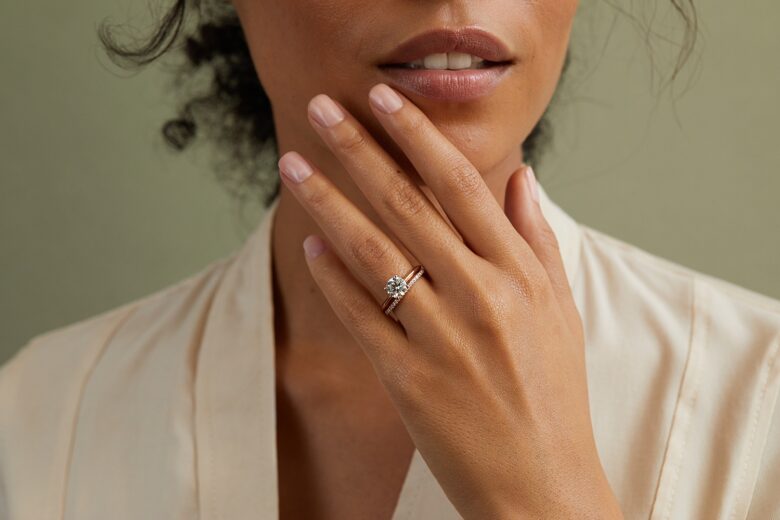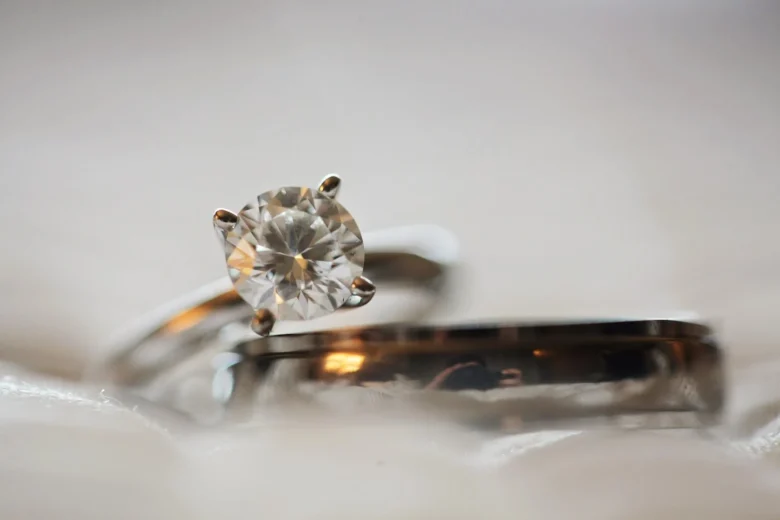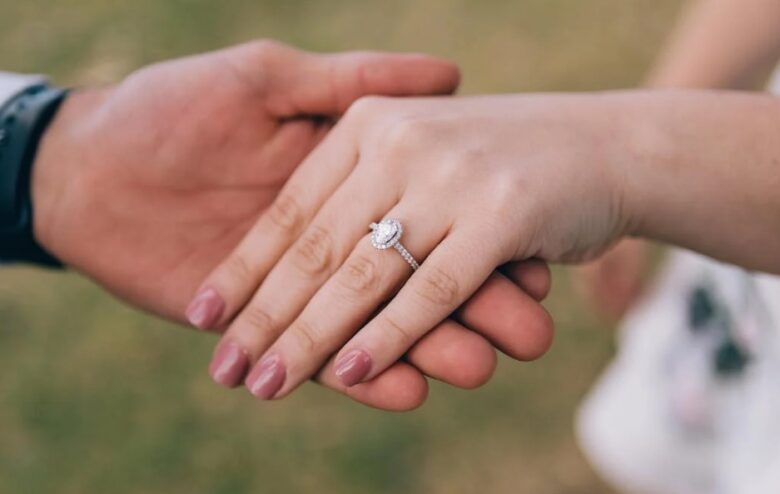If you love diamonds but don’t want a natural diamond, consider a lab-grown diamond engagement ring. Lab diamonds are an environmentally friendly, affordable, ethically conscious alternative to natural, earth-mined diamonds. Their popularity continues to grow because of their benefits and as more couples seek out a conflict-free diamond. We’ll compare the pros and cons of lab-grown diamonds to see if they’re right for your engagement ring.
Contents
Pros of Lab Diamond Engagement Rings

Source: burghbrides.com
To decide whether a lab-grown diamond is for you, it’s important to weigh the pros and cons. Keep reading to learn more about the pros!
Ethical and Environmental Benefits
Lab-created diamonds are more environmentally friendly than natural diamonds and an ethical choice in diamonds. They’re conflict-free and you know exactly where they were made. Conflict diamonds (also called “blood” diamonds) refer to diamonds that are mined in war zones to perpetuate war or to fund warlords and insurgents. Many natural diamond origins are unknown. Choosing a lab-grown diamond means you aren’t supporting conflict diamonds. While resources are used to create lab-grown diamonds, they have a smaller carbon footprint compared to mined diamonds, making them more environmentally friendly.
As you consider the pros and cons of purchasing a lab-grown diamond engagement ring, it’s intriguing to delve into the fascination surrounding synthetic diamonds, a topic explored in the related article.
Cost Savings
You can get a larger, higher-quality lab-grown diamond ring versus a natural diamond. Lab-grown diamonds typically cost roughly 30-50% less than earth-mined diamonds because the manufacturing process cuts out lengthy supply chains and eliminates expensive mining costs. Diamonds are rare, especially larger diamonds, so the price of natural diamonds increases exponentially as you go larger.
If you’re exploring unconventional options for engagement rings, delving into the world of alternative gemstones and choices can provide unique insights, complementing the discussion on lab-grown diamond rings in the related article.
Quality Control
Although lab-created diamonds are made in a controlled environment, each diamond differs in quality just like natural diamonds. However, lab diamonds are carefully monitored and have strict quality control processes. This results in higher, consistent quality diamonds with fewer imperfections. Every lab diamond is graded using the 4Cs of Diamond Quality: cut, color, clarity, and carat weight. You have more lab diamonds to choose from, so you can search for diamonds with specific characteristics that you want, such as clarity and color.
Transparency

Source:pexels.com
Lab diamonds that are certified come accompanied by detailed documentation regarding their quality and their origin. A certified lab diamond confirms that it is lab-grown and the quality of the diamond (color, clarity, and often cut) meets a certain standard according to a qualified, experienced gemologist. Well-known organizations that grade diamonds include the GIA (Gemological Institute of America) and the International Gemological Institute (IGI). GIA has graded laboratory-grown diamonds since 2007. Certification also ensures that you can pinpoint the origin of the diamond – they’re traceable and conflict-free.
Unique Colors
While you might think you can only get colorless lab diamonds, you can also find fancy diamonds in a variety of colors, such as blue, pink, yellow, and brown. More choices mean you can create the perfect lab-grown diamond engagement ring that you want – even if your heart is set on a pink sparkler.
Cons of Lab Diamond Engagement Rings
We can’t mention all of the benefits of lab-created diamonds without mentioning their cons.
Perceived Value
Lab-grown diamonds aren’t as rare as natural diamonds, so their value could depreciate over time. This will impact resale value if you want to sell your jewelry in the future. Similarly, a lab-grown diamond ring may not hold the same sentimental value as a natural diamond that gets handed down from generation to generation.
Limited Size and Availability
The average size for a lab-grown diamond is 1.08 carats. At this time, there aren’t as many extremely large lab diamonds. So if you’re looking for a very large stone, you might have to look for a natural diamond. If you want an unusual diamond cut, it might not be available in a lab-made option.
Lack of Tradition

Source:pexels.com
The tradition is to give a natural diamond ring during an engagement. If your culture is set in tradition, you might face some resistance if you veer away from it. However, more and more couples choose to venture outside of tradition as they choose rings that carry meaning and value to them personally. For example, if having a conflict-free diamond and one that isn’t made from depleting natural resources are top priorities for your ring, then you can explain your point of view to your family.
Ready for a Lab Diamond Engagement Ring
You’ll have to weigh the pros and cons of lab and natural diamonds and decide what works best for you. Consider your budget, opinions of conflict-free diamonds, and the environmental impacts of diamond mining. However, if you want a large, specific cut for your diamond, you might have limited options in lab-grown stones. Extremely large lab diamonds are hard to find, and it might be challenging to find an unusual cut. Ultimately, to make an informed decision about the ideal gemstone for your engagement ring, it’s essential to carefully consider both the advantages and disadvantages of lab-grown diamonds, taking into account your personal preferences and priorities.
When considering a diamond engagement ring purchase, it’s crucial for consumers and retailers alike to understand the evolving landscape of artificial vs. naturally occurring diamonds, as elucidated in the corresponding article.
Conclusion
Choosing between a lab-grown and a natural diamond engagement ring ultimately comes down to personal preferences and values. Lab-grown diamonds offer ethical, environmental, and financial advantages, along with high quality and customization options. However, they may not hold the same sentimental value for those who appreciate the rarity and geological history of natural diamonds.
To make an informed decision, consider your priorities and what matters most to you and your partner when it comes to this significant purchase. Whether you choose a lab-grown or natural diamond engagement ring, both options can symbolize love and commitment in their unique ways.
